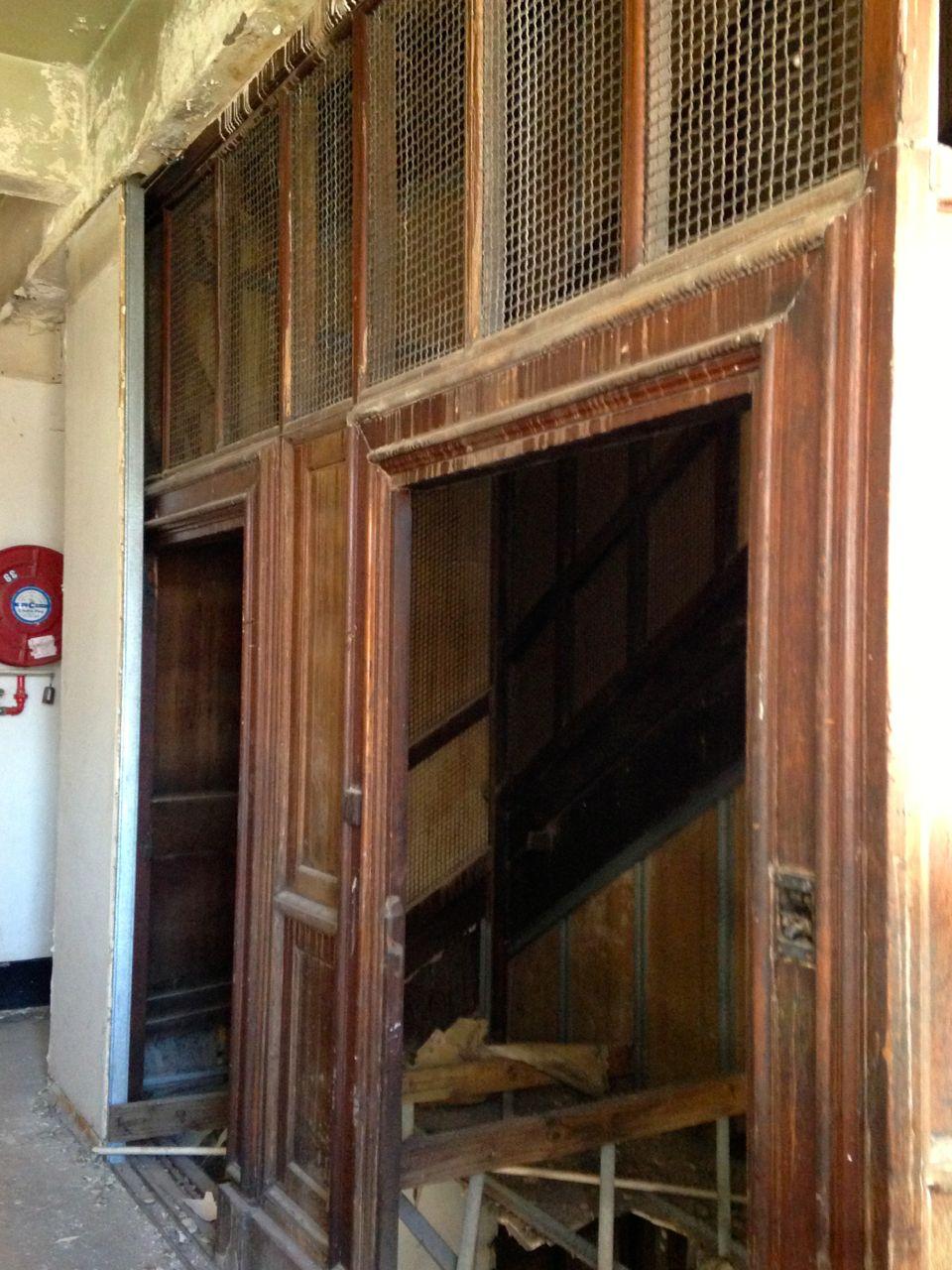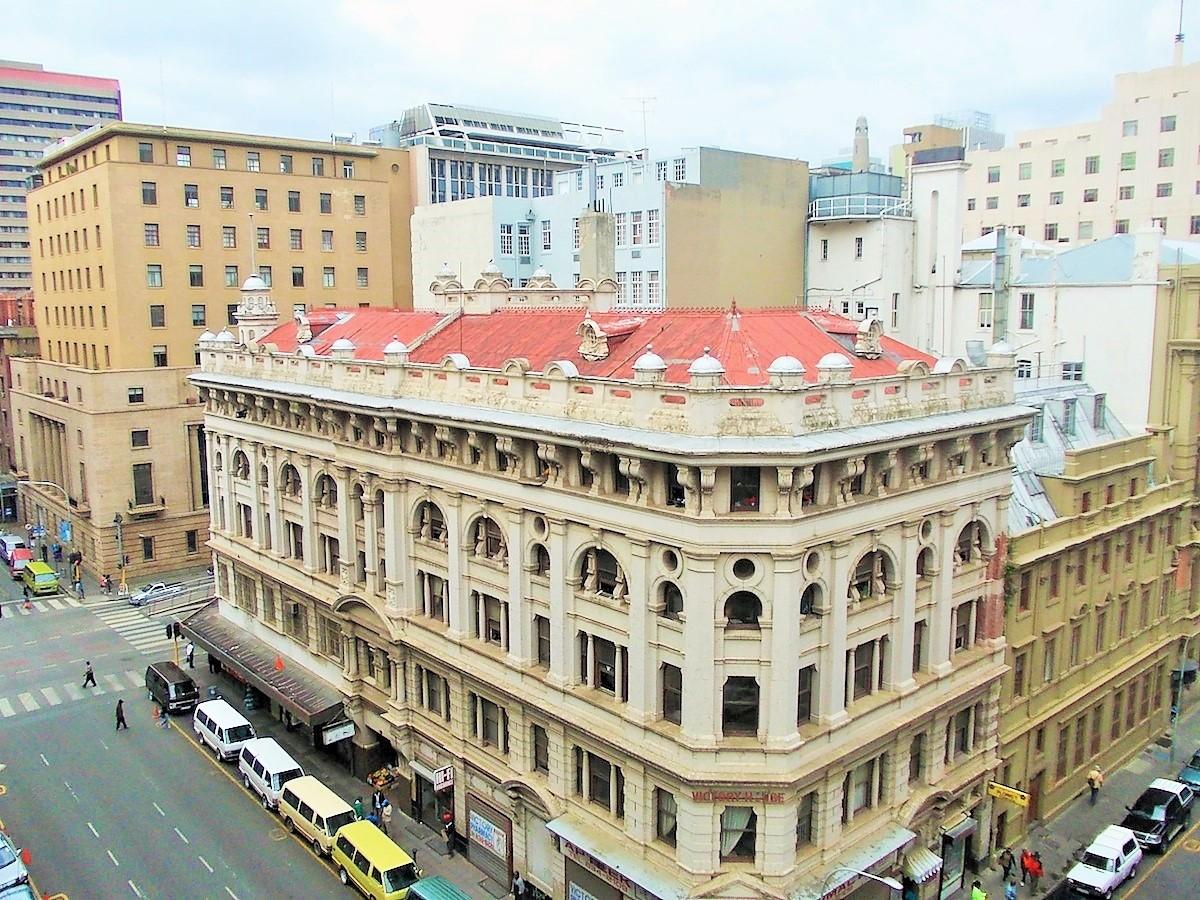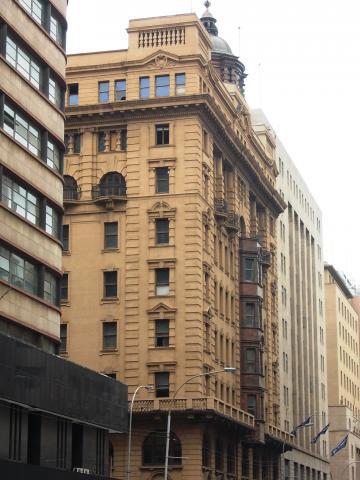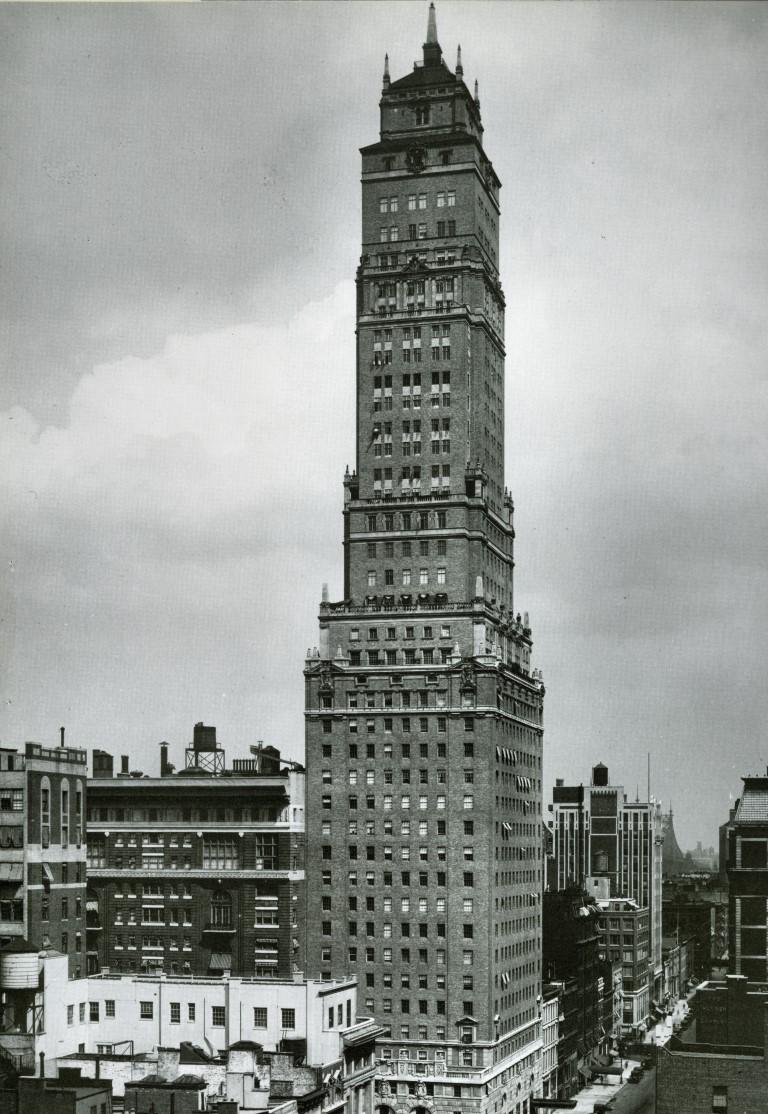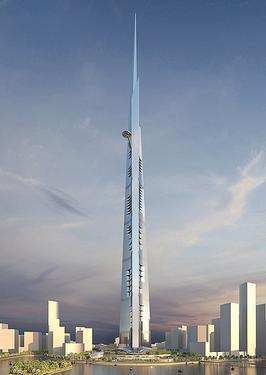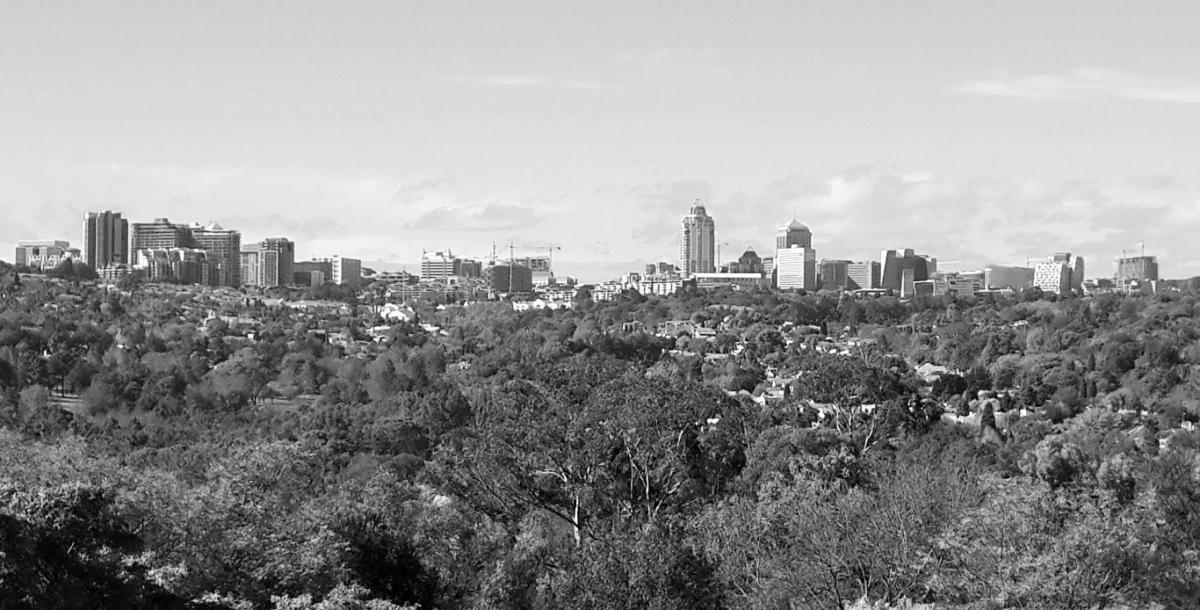
Disclaimer: Any views expressed by individuals and organisations are their own and do not in any way represent the views of The Heritage Portal. If you find any mistakes or historical inaccuracies, please contact the editor.
For those of us old enough to remember, there was a tune called the “Lift Girl’s Lament” by the British singer songwriter Jeremy Taylor (he who was banished from South Africa for deriding Apartheid), which had the immortal line “I might go a thousand feet a day but I’m not going to go that far”; the song told the tale of a lift operator in a downtown Johannesburg department store in the 1960’s.
The old lift entrance at Stuttafords in Johannesburg during restoration (The Heritage Portal)
Johannesburg was founded in 1886 and rose up from a mining camp to become a metropolis, the largest city in Southern Africa. Its beginning coincided with the coming together of the new technologies of electricity, the elevator (lift) and steel, which brought about a great revolution in architecture giving the opportunity to architects to go skywards.
Johannesburg Council Chamber and Skyline (The Heritage Portal)
Ever since the story of the Tower of Babel (Genesis 11.4) mankind has tried to reach upwards into the sky, the spires of the great medieval cathedrals are a case in point, however the master masons who built them were constrained by the limitations of the available building materials that they worked with – timber, brick and stone masonry. A masonry wall had a certain minimum thickness to support what went on top of it and as height (and thus weight) increased so did the thickness of the wall. The master mason (and later the architect), no matter how ingenious he was, could only build to a maximum height which was limited by the practicable strength and width of the foundations and the walls of the lower storeys. This situation was radically changed in the mid 19th century when wrought iron and later mild steel was produced (economically) in the form of structural sections – joists, channels and angles. Structural sections and the elevator removed the barrier to building into the sky.
The Great Chicago Fire of 1871, which caused three square miles of the city centre (now known as the Loop) to be razed to the ground, demanded in its aftermath the tightening up of the city’s building regulations to ensure that new construction would be fireproof. This would lead to the use of the new form of building construction. The crowded downtown area of necessity had to rise higher to make best use of real estate values and this made Chicago the birthplace of the Skyscraper. The first stage in the development of the Skyscraper happened in 1885 when the Home Insurance Building, which rose to a modest height of 10 storeys (later increased to 12) was completed. The architect responsible was William Le Baron Jenney (a contemporary of Gustave Eiffel at the Ecole Centrale, Paris) and he chose to use a wrought iron frame comprising beams and columns to relieve the necessity for thick walls at ground level. It is worth mentioning that a switch was made to mild steel for the upper five storeys. However not everyone was convinced of the soundness of the structural frame and during construction a temporary halt was made to examine whether or not the building would stand up; not only did it stand up, it stood for a new American architectural style, called the Chicago School.
Old photo of the Home Insurance Building Chicago via Wikipedia
The Chicago School changed for ever the way that cities were to be built and at the “Fin de Siecle” (the end of the 19th century) America was exporting high rise steel framed buildings across the globe. Most were no more than 10 storeys high and by today’s standards they would not be considered as Skyscrapers at all, however they set in motion a development that would in time change the skylines of the major cities of the world.
Structural steel made possible the skyline of New York’s Manhattan Island which has vied with Chicago for bragging rights over which has the highest Skyscrapers, but without the elevator the buildings would have been mere “white elephants” as stairs going up six floors was the limit that most people were prepared to climb; although there is an annual race to the top of the Empire State Building (102 floors). Therefore it can be said that high rise buildings exist by the grace of elevators and not the other way around.
Elisha Graves Otis is the man credited with the invention of the elevator, but in truth he invented the safety brake, which stopped a hoisting platform crashing to the ground. In 1854 he gave a daring demonstration at New York’s Crystal Palace, where he shocked the crowd by having the suspension rope cut whilst he was standing on the platform. The platform dropped only a few inches before it came to a standstill and he was able to say “All safe gentlemen”. From humble beginnings in Yonkers, New York the Otis Elevator Co. has become a multi-national company and a world leader in elevator installation and servicing.
Sources indicate that Victory House (originally Permanent Buildings) had the first elevator in Johannesburg (The Heritage Portal)
The archives are full of stories about the Corner House's famous lift (The Heritage Portal)
Until the advent of the elevator the top floor of a building was always seen as being the servants’ quarters or garrets for the poor – Fagin in “Oliver Twist” comes to mind. Elevators changed all that and the penthouse flat overlooking Central Park became prime real estate, although it took a while for social habits to change and it was not until the “Roaring Twenties” that it became fashionable to live up high with the building of the Ritz Tower in 1925 and ever since then New Yorkers have had a love affair with altitude.
Old photo of the Ritz Tower (shared via Pinterest)
The renowned architect, Frank Lloyd Wright envisaged in his 1957 book entitled “A Testament” a mile high tower called the Illinois Sky-City to be built in his home town of Chicago and although 60 years has passed by it still remains a pipedream . The nearest thing to it, when completed, will be the Jeddah Tower, Saudi Arabia, which will stand at least 1 000m (3 280 feet) tall, although its final height is as yet undisclosed, which gives a new meaning to the saying “The Sky’s the Limit”.
Jeddah Tower Saudi Arabia (via wikipedia)
References and further reading:
- “Works of Man” by Ronald W. Clark, Century Publishing, 1985.
- “Structures – Man-made Wonders of the World” by Nigel Hawkes, Readers Digest, 1990.
- “Otis – Giving Rise to the Modern City” by Jason Goodwin, Ivan R. Dee, 2001.
- “Chicago – City of Many Dreams” text by Bill Harris, Crescent Books, 1983.
- “Skyscrapers” by Antonino Terranova, White Star Publishers, 2003.
- “Architecture” by W.R. Dalzell, Hamlyn, 1969.
- “Structure in Architecture – the Building of Buildings” 2nd edition by M. Salvadori & R. Heller, Prentice Hall, 1975.
- “10 Facts About Jeddah Tower, the Soon-To-Be Tallest Building in the World” www.architizer.com
Comments will load below. If for any reason none appear click here for some troubleshooting tips. If you would like to post a comment and need instructions click here.

